What is Vaporwave?
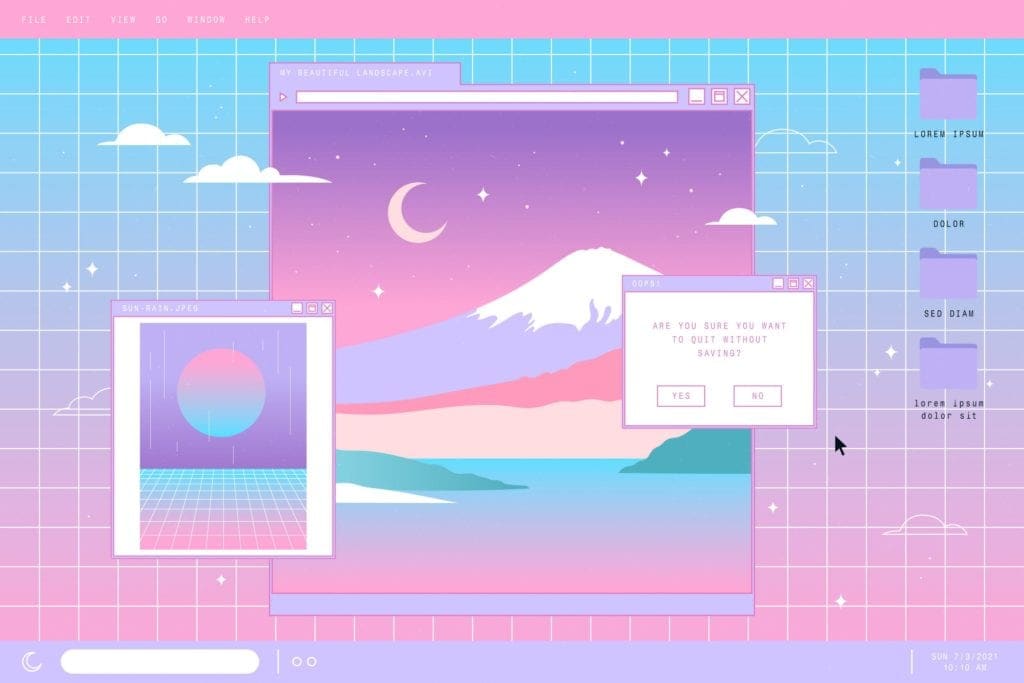
You never realize how hard it is to speak seriously about something that’s supposed to be an ironic satire of something that’s already kind of ironic until you have 15 tabs open, three hours of research, and 0 words on the page, but I’m going to give it a try.
Vaporwave is a lot of things. It’s a meme. It’s a commentary on capitalism. It’s a sound. It’s a look. It’s Escher and Dali sitting down to a sushi dinner and scrolling through Tumblr.
It’s modern and retro, the contrast of pixels and hyperrealism, and it evokes a nostalgia that is both comforting and deeply uncomfortable.
With all that in mind, bear with me.
I’ll try to explain, but Vaporwave really is just something you have to experience for yourself.
Or not.
Whatever.
The Origins of Vaporwave
Vaporwave emerged from the sludge of the internet as a full microculture right from the jump. In fact, the totality of its evolution was so complete at its first emergence that it’s hard to articulate where it came from or why.
Meant to be an ironic take on the Chillwave movement, Vaporwave attempts to take current pop culture and make it retro before its time. It’s ghostly, unsettling, and flecked with Pepto Bismol pink and other pastels that should be pleasant to look at but just aren’t.
The anonymity of online communities allowed Vaporwave artists to reveal themselves in one fell swoop. You either liked it or didn’t. There was no marketing, no hype, nothing other than a shared post on Reddit or 4chan that quickly grew in its reach until a small following of nostalgia-hungry weird kids cultivated the electropop subgenre into a socially acceptable mish-mash of sound, style, and political critique.
The first instances of Vaporwave as a music genre came in 2011, with pioneers like James Ferraro and Ramona Xavier leading the charge. Xavier’s Floral Shoppe is often noted as the seminal album for the genre, sparking inspiration in other artists across platforms like Bandcamp, Turntable.Fm, and Soundcloud to try their hand at bastardizing muzak by sprinkling in chopped and screwed samples of classic digital noises.
Think elevator music + the sound of AOL dial-up + Chilledcow’s lofi hip hop radio – beats to relax/study to all mixed into one.
If you’re confused, don’t worry. That’s kind of the point.
As a Sonic Aesthetic
Before we get too far into this, I want to note that I am not a music critic, nor do I have training in talking about sound as art. For that reason, I’ll be relying heavily on other people’s descriptions to communicate the idea of sonic stylings of Vaporwave, but it’s far more helpful to just listen to examples on YouTube. I’ll list out some channels to try at the end of this section.
While Vaporwave’s visual intricacies are perhaps a little more recognizable, it helps to listen to the music before you try to understand the message of the graphics. The sounds did come first, after all.
It’s full of beeps, synth-y waves of sound, and 80s pop inspiration. There’s a little jazz, and a lot of sampling slowed down and mixed to the point of feeling achingly familiar but completely strange.
Eye on Design describes it as an “eerie amalgam of loungy elevator muzak, television advertisements, infomercials, and video game samples,” and that’s about as apt a description as any.
Because Vaporwave is designed to feel personal, to remind you of the sacchrine, color-drenched days of the Millenial childhood, it’s insightful to view it through other people’s lenses.
On the Vaporwave subreddit, the following question was posed:
Answers ranged from serious musical critique to subjective descriptions based on how it made the listeners feel:
JohnTheMod: “’80s pop and Muzak slowed down and tossed in a blender with two parts Crystal Pepsi. If you start to see tracking lines, you’ve done it right.”
VirtualisedNinja: “it’s kinda like living in a junkyard but you’re in a dystopian future and you find a bunch of vhs tapes and you’re the only person in the world and everything is lonely but you have a bunch of weed and your high all the time and you’re in japan and you’re in the sky.”
Matt_dragon: “Vaporwave is sort of a fusion of content from that era of overindulgence and formulaic manufactured chart music, with a very almost effortless lethargic “clean” sound inspired by the new wave of millennial minimalism”
SadStarCat: “A loosely constructed genre consisting of but not limited to elevator music, sentimental sampling, jazz and funk, 80’s futurism and anti-futurism; it’s the dreamy uneasiness of a future that will never come, containing angst-filled sonic defacements of corporate jingles and mall music, ironically and unironically presented; forever dying and forever new, the sentimentality of sounds pass away with the generations touched by a fantasy presented on a screen; the highs and lows of its sounds reflect the highs and lows reachable in the echelons of humans society, unearth the hope you felt as a blank slate unfamiliar with marketing, the laughter a distant memory dying in your ears.”
demigod999: “An internet-born deadpan recontextualization of glossy corporate music with heavy sampling from pop music and advertisements of the 80s and 90s”
Yeah… Like I said, probably easier to just listen for yourself. Give these a shot, then come back and reread the Reddit comments. It should (almost) start to make sense.
- Vaporwave Chill [Full Tracks]
- Aesthetic 80s Vaporwave/Chill Wave Outrun Music 2021!
- Late night Vaporwave
As a Visual Aesthetic
One of the key inspirations is The Memphis Group architects and designers based out of Milan, Italy, who reveled in the “tackiness” of the 1980s. They faded from relevance in the 90s but are often referenced in the vaporwave aesthetic. It’s kitschy and garish, hailing back to the early days of Nickelodeon, Peewee’s Playhouse, and Lisa Frank.
A lot of the Vaporwave visual aesthetic leans heavily on the “uncanny valley,” a phenomenon in which humans find human-like things more appealing up until they become “too human.” It typically refers specifically to robots, AI, and the like, but I would place the art of Salvador Dali on the same plane.
An article from Scientific American features insight from University of San Diego cognitive scientist Ayse Saygin, who notes: “If you look humanlike but your motion is jerky or you can’t make proper eye contact, those are the things that make them uncanny… I think the key is that when you make appearances humanlike, you raise expectations for the brain. When those expectations are not met, then you have the problem in the brain.”
Basically, imagine that Alexa dropped the tinny, robot voice in favor of a true, human voice actress, but all interactions had zero inflection or emotion. That’s the uncanny valley.
Vaporwave art takes everyday objects, like cans of Arizona iced tea, marble busts, sunsets, or MS Paint screenshots, then superimposes them over checkerboard boxes, oversaturated colors, and melting cityscapes. Everything is stretched a little too wide or floating just a little too far to the left. It’s disconcerting, but not enough to be explicitly weird.
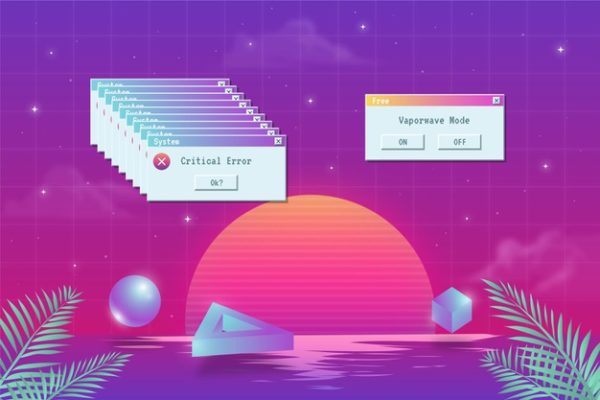

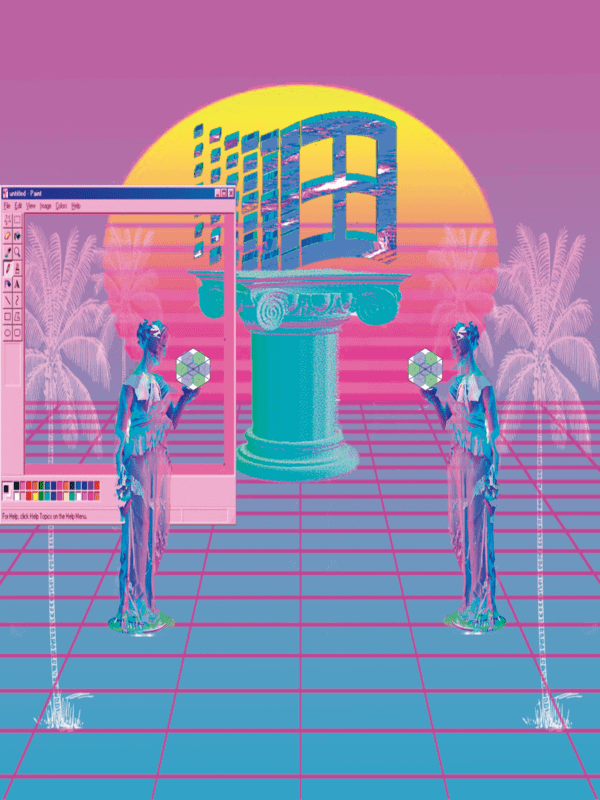
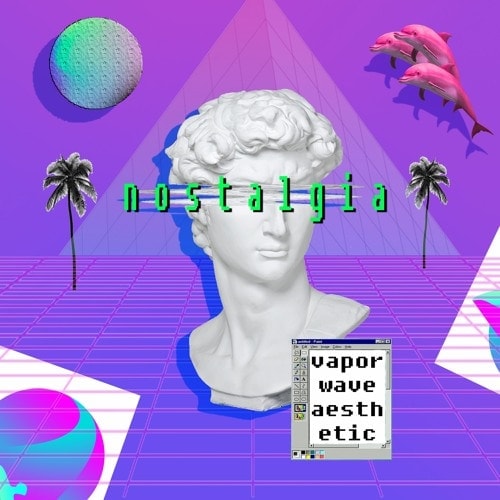
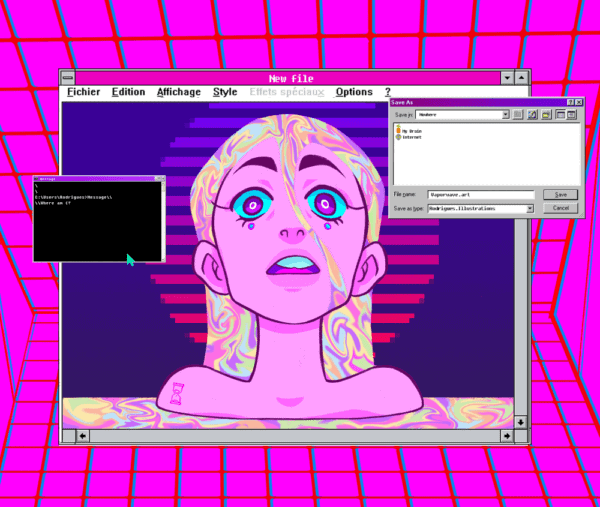
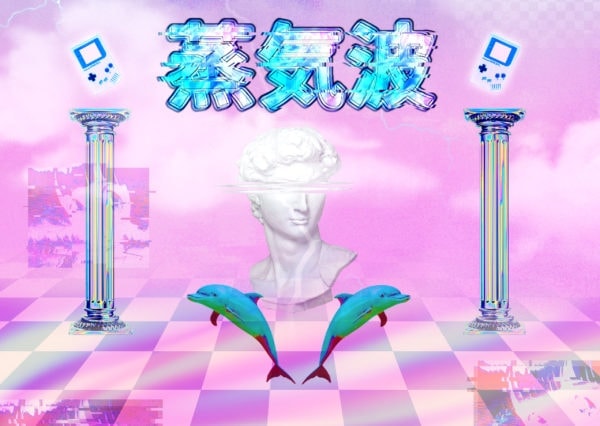
Japanese characters make up another keystone of the Vaporwave aesthetic, a direct reference to the 80s idea of Japan as the heartbeat of innovation and technology.
At its heart, Vaporwave is the crossroad of gaudy-glam meets yuppie criticism of the overly-indulgent upper-middle-class idea of luxury— think palm trees, pyramids, and alabaster statues.
It’s pastel nihilism that revels in a world made up of technology both forgotten and familiar.
It looks like a Windows screensaver you saw in a nightmare once.
It’s a bad graphic design that’s kind of good but in a like… ironic way, ya know?
A Decade of Vaporwave
The strange and confusing landscape of Vaporwave turned 10 in 2021, and it seems to continue pushing forward, permeating in the new age of Soundcloud sad boi rappers, anime-loving gamers who fill their spaces with matte-pink tech accessories, and night owls who depend on live-streamed lo-fi to get through lonely nights.
While it’s almost impossible to describe— like the taste of bubblegum or the way it felt the first time you watched Ghostbusters— there’s an undeniable appeal to the off-balance, off-kilter type of comfort it holds for those of us who spent our halcyon days playing on the N64 and delighting in the pinging sound of an AOL Instant Messenger notification, but now look back at the deceptive innocence of progress with a yearning for the world to slow down and with the quiet resignation of knowing that it never will.
Featured Image Source: <a href=’https://www.freepik.com/vectors/background’>Background vector created by pikisuperstar – www.freepik.com</a>